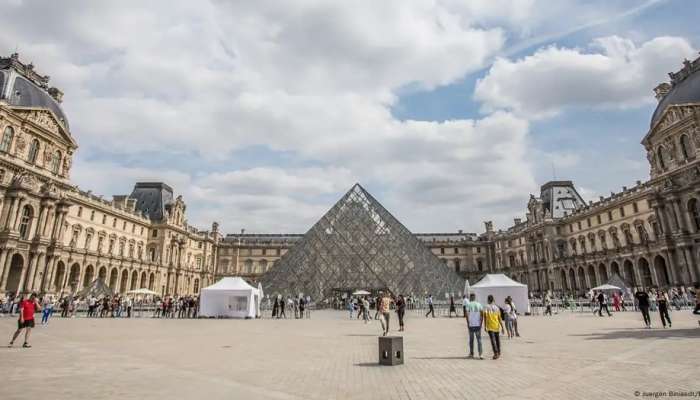
Paris: If you haven't visited the Louvre, then you haven't really seen Paris — this thought may well be shared by the nearly 9 million visitors who descend upon the museum every year to try and catch a glimpse of the Mona Lisa through the crowds.
The museum itself is 230 years old, and many of its structures are reaching their limits. The walls are moist, putting the artwork at risk, and the entrance under the iconic glass pyramid is far too small for the ever-growing number of visitors.
That is set to change by 2031. That should be the year when a major renovation, recently announced by French President Emmanuel Macron, comes to an end, letting the dilapidated building shine in a new and modern light.
Future-proofing museums
How can you outfit museums for the future and make them internationally competitive?
That is also the question in Berlin, where the Museum Island — a complex of classic and modern buildings recognised as a UNESCO World Heritage Site — receives nearly 3 million individuals annually.
In 1999, the Prussian Cultural Heritage Foundation (SPK), which manages the museums, announced a multibillion-plan to overhaul the individual buildings.
Three of the Museum Island's five historic buildings have already been renovated and are open to the public: the Old National Gallery (Alte Nationalgalerie), the Bode Museum and the New National Gallery (Neue Nationalgalerie). Since 2019, the modern James Simon Gallery has served as the entrance and reception area for the island's many visitors.
Works began in the Pergamon Museum in 2012 and are expected to last until 2037. The museum's famous artworks, like the ancient Greek Pergamon altar or the Babylonian Ishtar gate, will spend years in warehouses.
Many of the buildings that house museums are protected national landmarks, which means they are subject to strict rules. At the same time, the new buildings must also be sustainable, climate-neutral and modern.
The SPK has said the renovated buildings boast more exhibition space, offerings on topics like diversity and family, more tours for children and teens and greater accessibility. A contemporary appearance should attract people of all ages and educational backgrounds, and young visitors should get more out of a visit than just some cool spots for taking selfies.
Reimagining museums as spaces for socialising
A general consensus clearly emerged during the COVID-19 pandemic when museums were forced to close, resulting in major financial losses: museums need different offerings if they want to reach people — and they must become more than just pilgrimage destinations for art lovers.
For many people, going to a museum is a leisure activity, something to do on a rainy afternoon, or as an essential part of a city vacation. Museum offerings should correspond to this view, and be conceived not just as places of education but as stylish spaces for socialising.
For decades now, many cities, including Berlin, have hosted a "Long Night of Museums": Visitors can buy reduced-price tickets that let them stroll through museums at night while eating, drinking, chatting, listening to music or even dancing to a DJ set.
Some museums, like the Baden State Museum in the southwest German city of Karlsruhe, have turned from single tickets to subscriptions as a way to build visitor loyalty. Anyone who wants to can come multiple times and also avoid long wait times. This takes pressure off the visitor from feeling like they have to see everything in one single go.